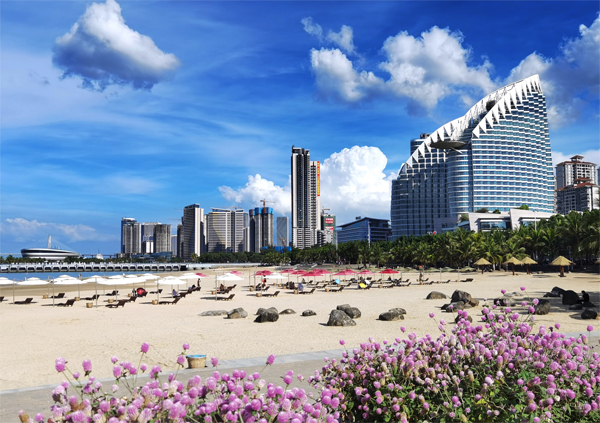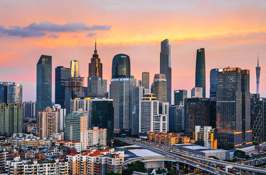Environment put first to lift people's quality of life
Zhanjiang has an ecological construction plan for the period 2020-35; one goal is to build waterside greenways totaling 180 kilometers in length by the end of 2022. They will be extended to 255 km by the end of 2025 and 1,500 km by the end of 2035, according to the plan.
The waterside greenways will be a complex system linking major rivers, lakes, reservoirs, estuaries and coastal zones in the city.
With the goal to cover almost all key water sources in the city, the greenways are aimed at ecological conservation, safeguarding the city, cultural promotion, landscape construction and the leisure industry as a whole.
According to Zhanjiang Daily, the city has invested 1.97 billion yuan ($304.72 million) in the water system protection and restoration project in the central urban area since 2019.
As a coastal city in Guangdong province, Zhanjiang is home to a large number of high-profile industrial projects. It is also making efforts to cut down energy consumption and emissions.
The Zhanjiang base of Baosteel Iron and Steel invested 6.4 billion yuan in environmental protection at the beginning of its construction.
Adopting 116 leading environmental protection technologies in the industry, the project is close to its goal of realizing green development.
Baosteel invested more than 200 million yuan to apply advanced pollution control technologies and realize deep treatment and recycling of industrial wastewater in its plant.

The coastal city of Zhanjiang boasts an appealing natural environment. LI BO/FOR CHINA DAILY
Zhongke (Guangdong) Refinery and Petrochemical Project, whose total investment in environmental protection at its plant reaches up to 3.7 billion yuan, is said to adopt world-leading environmental protection technology and stringent measures to reduce all kinds of pollutants.
Since the project begun in June last year, pollutant emissions have met the latest national standards. The utilization rate of water resources reached 98.75 percent and the reuse rate of sewage reached 76 percent.
The BASF Guangdong Verbund site is also committed to building itself into a model project of energy conservation and environmental protection. It plans to adopt higher technical indicators so that its wastewater discharge can be reduced by more than 85 percent.
Zhanjiang is making progress in improving the quality of green space across its urban area and is improving public services by building more parks.
So far this year, the city finished the construction of 30 miniparks, providing a comfortable and pleasant recreational space for residents.
In recent years, Zhanjiang has implemented an urban street upgrade project by constructing a number of small, shaded squares, shaded parking lots and sheltered footbridges. It also planted more than 35,000 square meters of flower beds, which have improved the city's appearance.
Nowadays, the blue sky in Zhanjiang has become one of the most important features of the city. In recent years, local authorities have taken many measures, such as developing clean energy and banning the burning of waste in open air, to tackle air pollution.
From 2018-20, the city remained among the top three places in the province in terms of the air quality index. In 2020, the AQI compliance rate reached 96.7 percent and the concentration of six major pollutants were all kept within national standards.
The concentration of PM2.5-particulate matter with a diameter of 2.5 micrometers or less-in the city is 21 micrograms per cubic meter, the lowest level since 2015.



 Print
Print Mail
Mail

